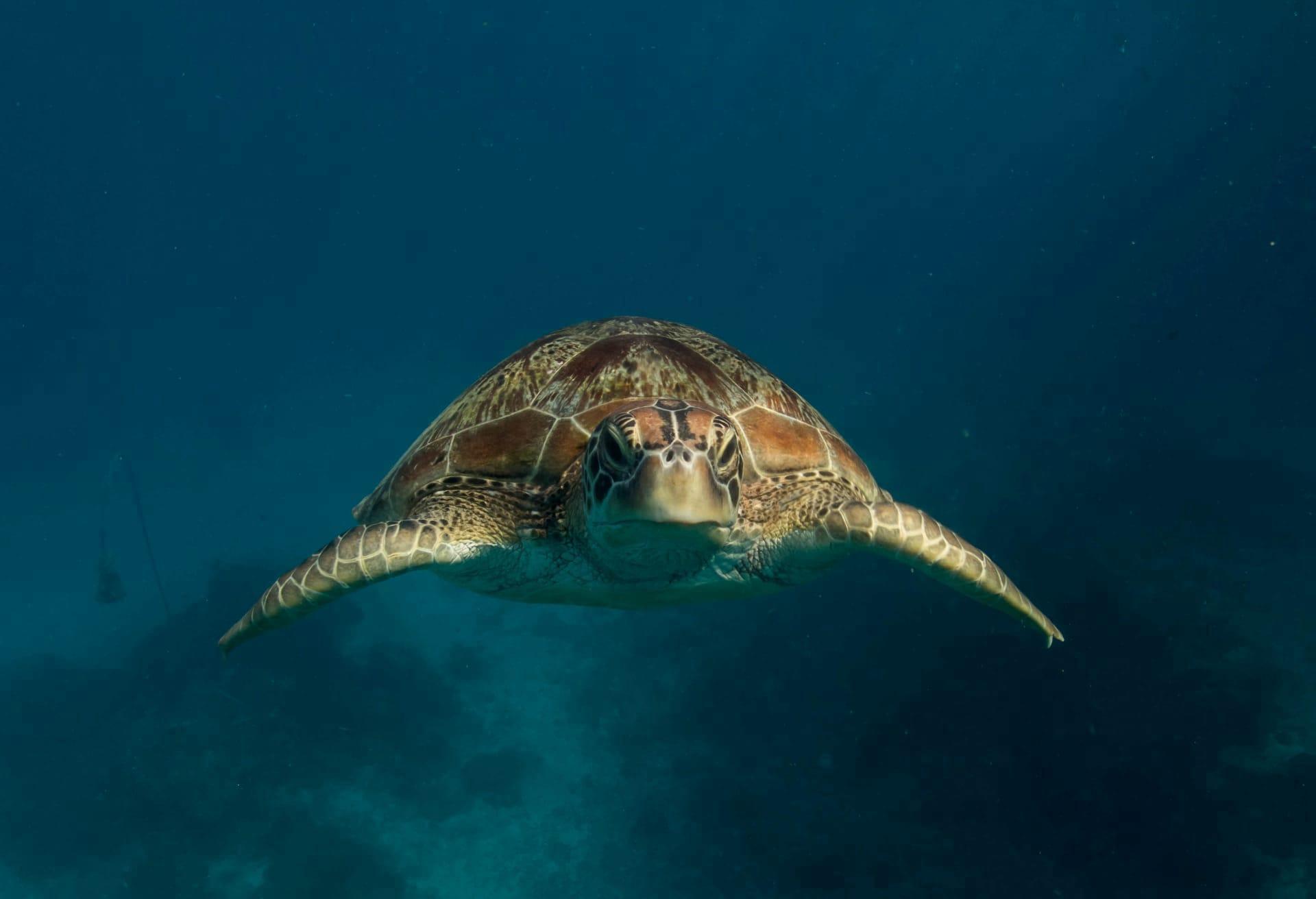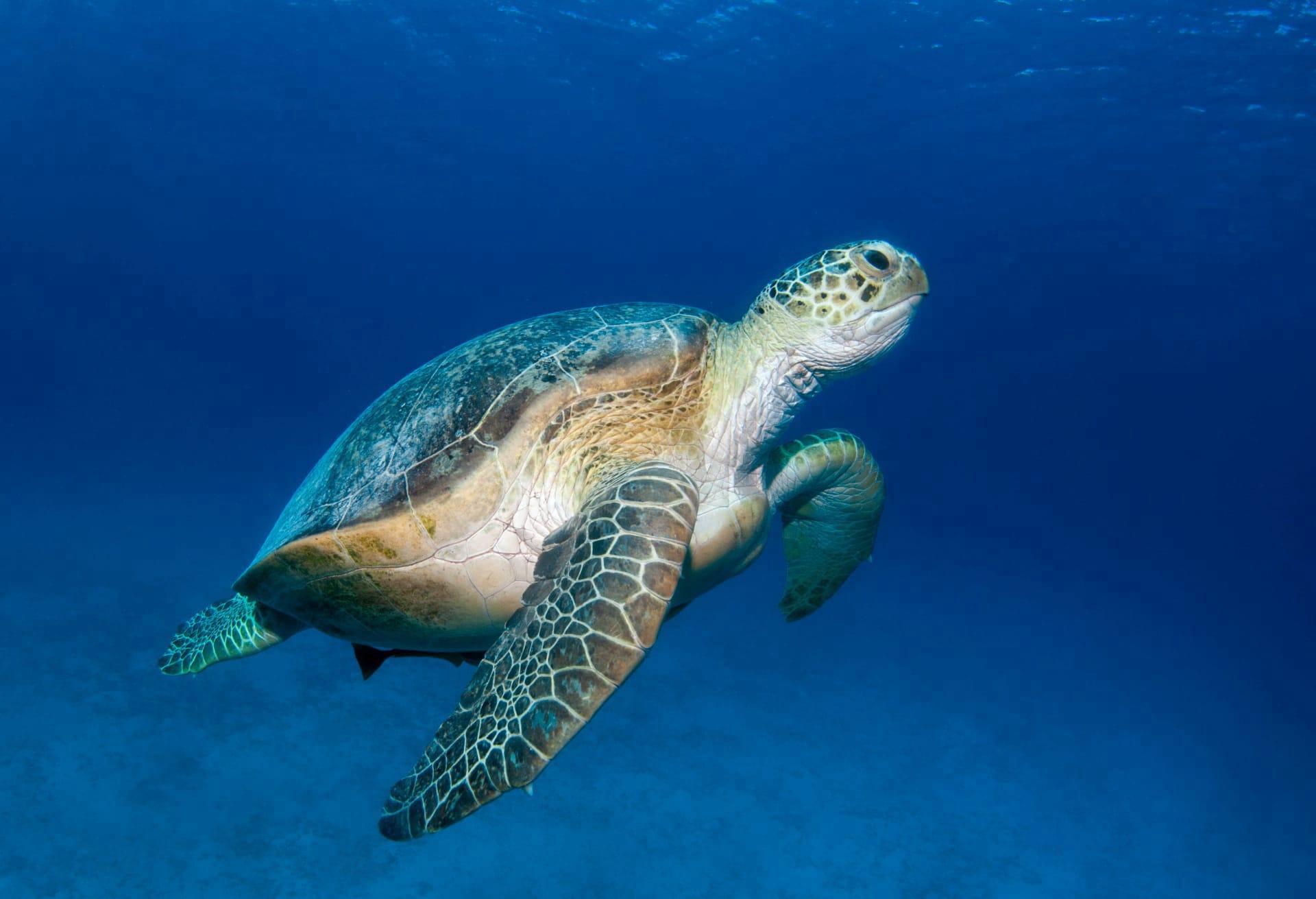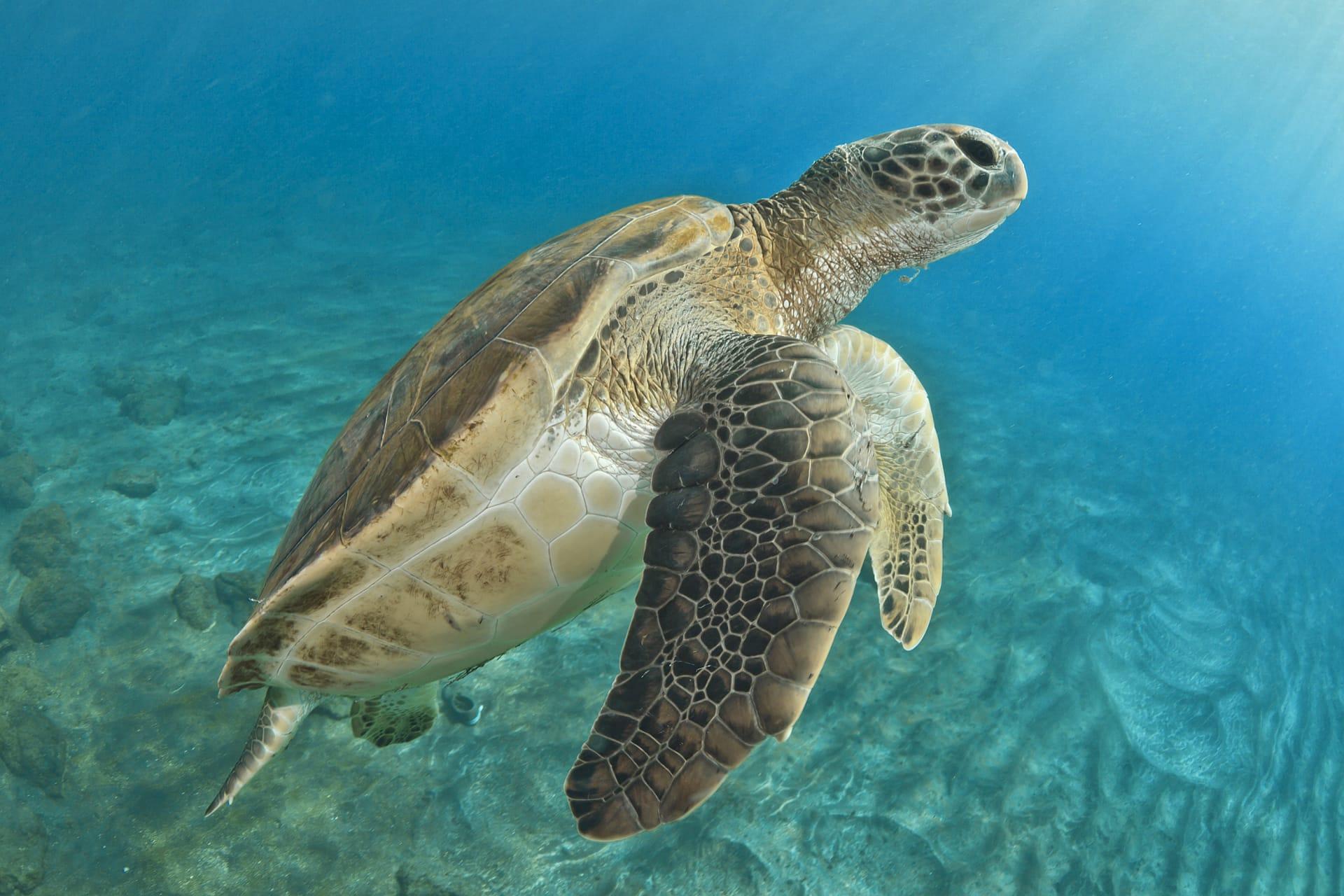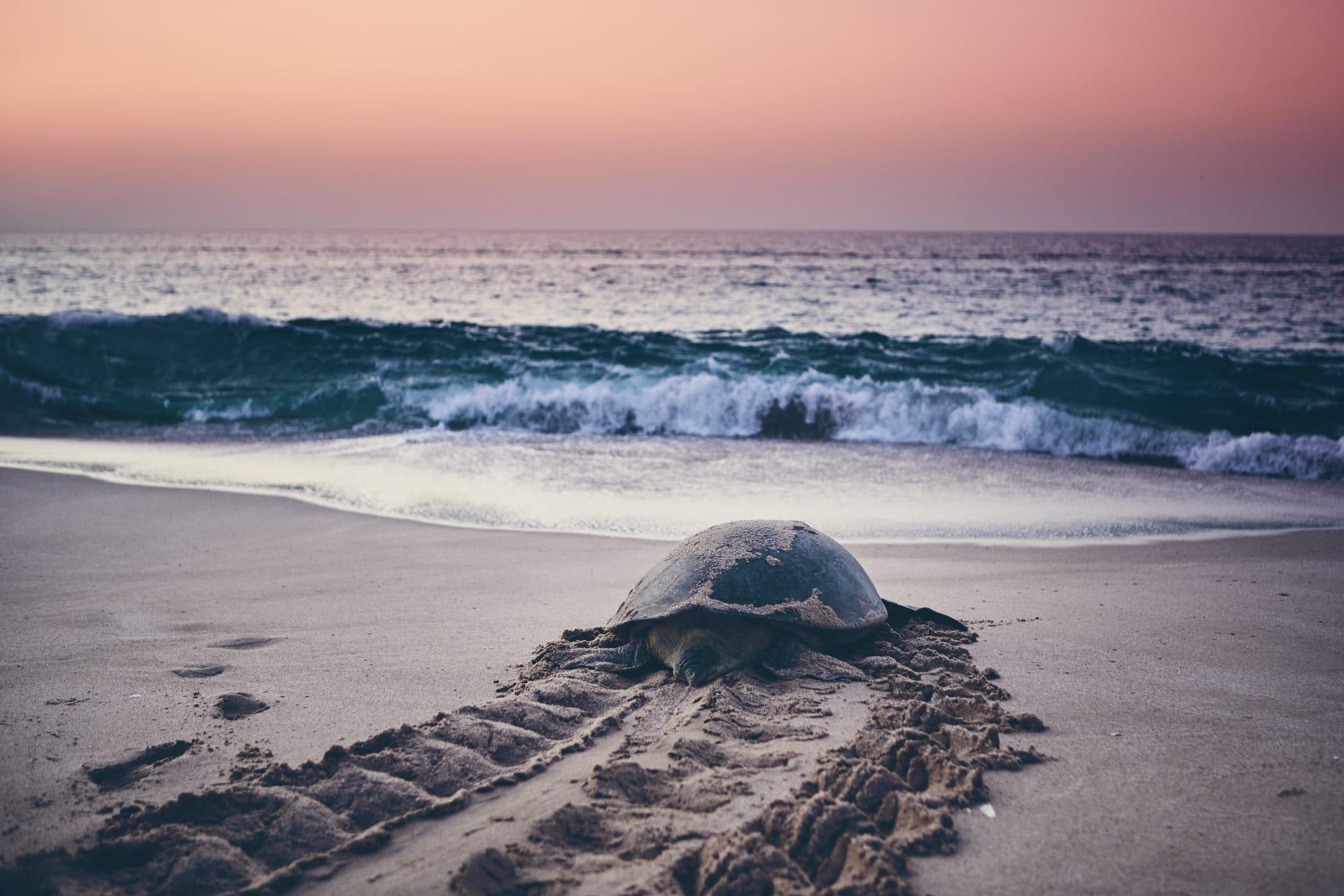Green Sea Turtle Characteristics
- Home /
- Mini Encyclopedia /
- Animal /
- Green Sea Turtle Characteristics
1
The Green Sea Turtle, known scientifically as Chelonia mydas, is a marvel of the marine world. These turtles are distinguished by their large, streamlined shells and the beautiful shades of green and brown on their skin. Adult Green Sea Turtles typically measure between 3 and 4 feet in length and can weigh up to 700 pounds, making them one of the largest species of sea turtles. Their lifespan is impressive, often living up to 80 years in the wild, though some have been known to live over a century!
One of the most distinctive organs of the Green Sea Turtle is its heart, which plays a crucial role in its survival in the ocean's depths. Unlike typical four-chambered hearts found in mammals, the Green Sea Turtle's heart has three chambers. This unique structure allows for efficient oxygenation of blood, crucial for a species that spends much of its life underwater. During long dives, the heart rate of these turtles slows down significantly, conserving oxygen and allowing them to stay submerged for hours at a time.

2
Question: Why do Green Sea Turtles come to shore?
Answer: Green Sea Turtles venture onto land primarily for nesting purposes. Female turtles return to the beaches where they were born, a remarkable journey often spanning thousands of miles. This behavior, known as natal homing, involves the turtles using the Earth's magnetic field as a guide to find their way back. Once they reach the shore, they dig nests in the sand with their flippers and lay around 100 to 200 eggs. After the eggs are laid, the females cover them with sand for protection and return to the sea, leaving the eggs to hatch on their own.

3
Green Sea Turtles are graceful swimmers, using their paddle-like flippers to glide through the water. These flippers are powerful and can propel them at speeds up to 35 kilometers per hour in short bursts, though they generally swim at a more leisurely pace. Their streamlined bodies reduce water resistance, making them agile and efficient in the marine environment.
In terms of feeding, Green Sea Turtles are primarily herbivores as adults, feeding on sea grasses and algae, which they graze on the ocean floor. This diet is unique among sea turtles and plays a significant role in their coloration, as the green fat under their shells comes from their plant-based diet. Younger turtles, however, may also consume invertebrates like jellyfish and sponges. Their beak-like mouths are well adapted for tearing and scraping vegetation.

4
The Green Sea Turtle inhabits a wide range of environments, thriving in both the open ocean and coastal areas. They are found primarily in tropical and subtropical seas, with their distribution spanning from the Atlantic to the Pacific Oceans. These turtles prefer shallow coastal waters with abundant sea grass beds, which provide their main food source. They are also commonly found around coral reefs, which offer shelter and additional food sources.
Reproduction in Green Sea Turtles is a fascinating process. Females reach sexual maturity between 20 to 50 years of age. They mate in the waters near their nesting beaches. After mating, the females come ashore to lay their eggs, typically during the night to avoid predators and the hot sun. Each female can nest multiple times in a season, but they do not nest every year, often taking a break for several years before nesting again.

5
Book: "Voyage of the Turtle: In Pursuit of the Earth's Last Dinosaur" by Carl Safina. This book, set in various countries including the United States and Australia and published in the early 2000s, offers a compelling look into the lives of sea turtles, including the Green Sea Turtle. Safina blends science, adventure, and conservation in his narrative, providing an in-depth view of these ancient creatures and the challenges they face in the modern world.
Book: "Sea Turtles: A Complete Guide to Their Biology, Behavior, and Conservation" by James R. Spotila. This comprehensive guide, published in the mid-2000s, is authored by one of the world's leading sea turtle experts. It covers various species, including the Green Sea Turtle, offering insights into their biology, behavior, and the urgent need for conservation. With detailed information and engaging anecdotes, it's a treasure trove for anyone interested in these fascinating marine reptiles.